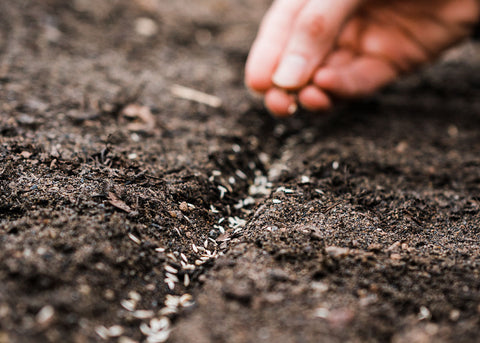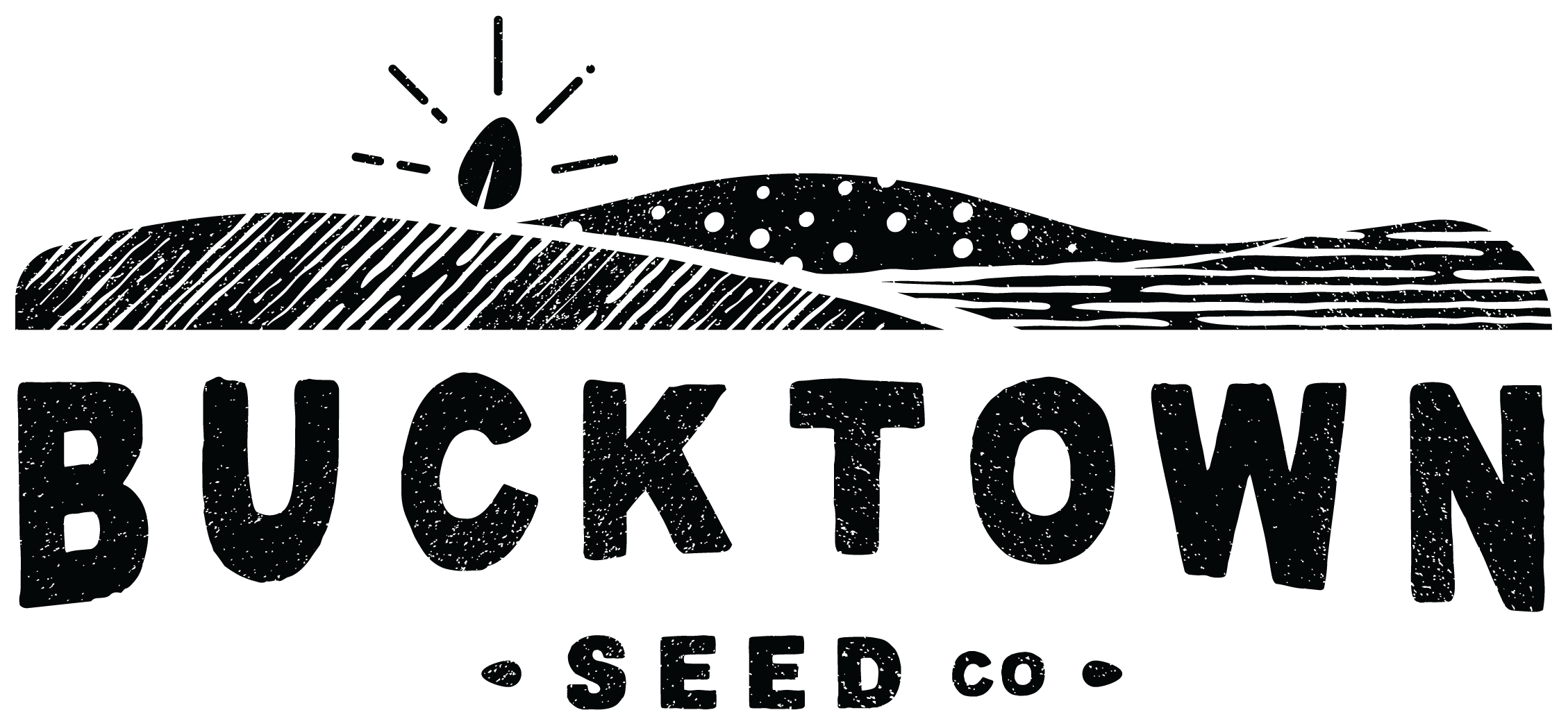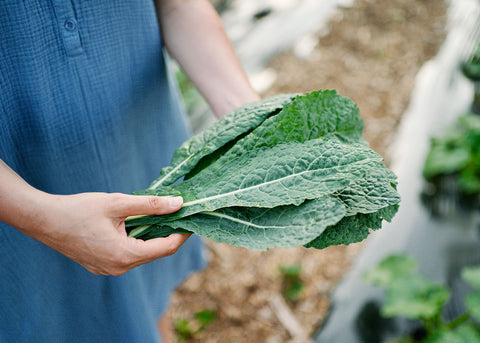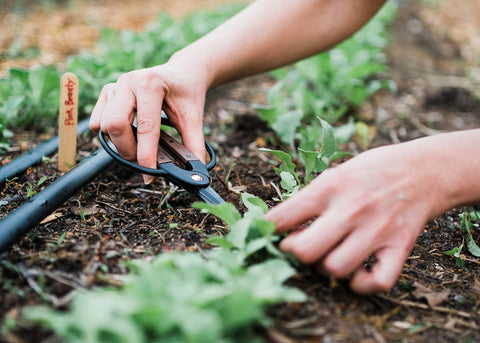
Not all seeds need a head start indoors. Some do best when planted right into the soil—just like nature intended.
Direct sowing (or direct seeding) means planting seeds—vegetables, flowers, herbs—straight into your garden bed at the right time for your growing zone. While certain crops benefit from being started indoors, many perform better when sown where they’ll grow.
Each Bucktown seed packet tells you what’s best for that variety: whether to start indoors or out, how deep to plant, ideal spacing, soil temp, frost timing, and more.

Why Direct Sow?
- Healthier roots: Plants sown in place grow strong root systems from the start—no transplant shock or rootbound stress.
- Less gear, less hassle: No grow lights, trays, or racks required. Just good soil, seeds, water, and sunlight.
Know Your Soil Conditions
Soil Temperature
Most seeds germinate best in soil between 55–65°F. Too cold, and they may rot. Too hot, and they’ll struggle. Use a soil thermometer and measure 1–2" deep to get an accurate read.
Soil Moisture
Check your soil by hand:
- If it stays balled up tight—too wet.
- If it crumbles like dust—too dry.
- If it holds together but breaks apart when worked—just right.
No fancy tool needed—just the two hands God gave you.
How to Sow Seeds the Right Way
- Smaller seeds = closer to the surface: Most small seeds should be sown ⅛"–¼" deep. Larger ones go ½"–1".
- Cover as needed: Most seeds benefit from a light layer of loose soil. Some, like lettuce or certain herbs, need light to germinate—press them into the surface and barely cover.
- Water gently: Keep the seed bed evenly moist but not soaked. A watering can or fine spray nozzle works well. Be careful not to wash away your seeds.

Caring for Your Seedlings
Once those first leaves break through, your work begins. Here’s how to help them thrive:
Weed Regularly
Weeds compete for water, light, and nutrients. Stay ahead of them using hand tools, hoes, or flame weeders.
Mulch Once Seedlings Are Established
Mulch helps retain moisture and suppress weeds. Use straw, grass clippings, leaves, or even plastic mulch depending on your setup.
Water Deeply and Consistently
Shallow-rooted plants like onions need frequent watering. Deep-rooted crops like carrots and beets benefit from less frequent but deeper soaks.
Thin Where Needed
Some crops need thinning early to grow well. Carrots, beets, radishes, lettuce, and turnips all benefit from space between plants. Crowded seedlings can stunt each other and compete for light, water, and nutrients.
Use scissors to snip the weaker seedlings at soil level instead of pulling them—this keeps you from disturbing the roots of the ones you’re keeping. It’s a small step that makes a big difference in root development and final harvest quality.
Fertilize Only If Needed
If your plants are green and growing, you may not need to fertilize. But if you're starting with brand new or low-nutrient soil, apply a gentle organic fertilizer about 4–6 weeks after germination. Liquid options like fish emulsion, seaweed extract, or compost tea are all good choices. Keep growth steady and consistent—too much fertilizer can cause more harm than good.
Final Thoughts
Direct seeding is simple, effective, and time-tested. It’s how food has been grown for generations—no lights, no trays, just soil, seed, and sweat.
Check your seed packets, prep your beds, and trust the process. The ground knows what to do.






God bless your company, I know I don’t trust this POISONOUS food nowadays! I LOVE that you kept the food as it was planned by GOD PLEASE DON’T SELL to... Show more
I discovered your site on YouTube and certainly glad I did! I have been reading your history and I’m quite impressed. Your down to earth philosophy on all God’s abundance... Show more
Is there a best soil to use? In the past I’ve used a mixture of 3 different things but I can’t remember what they are!